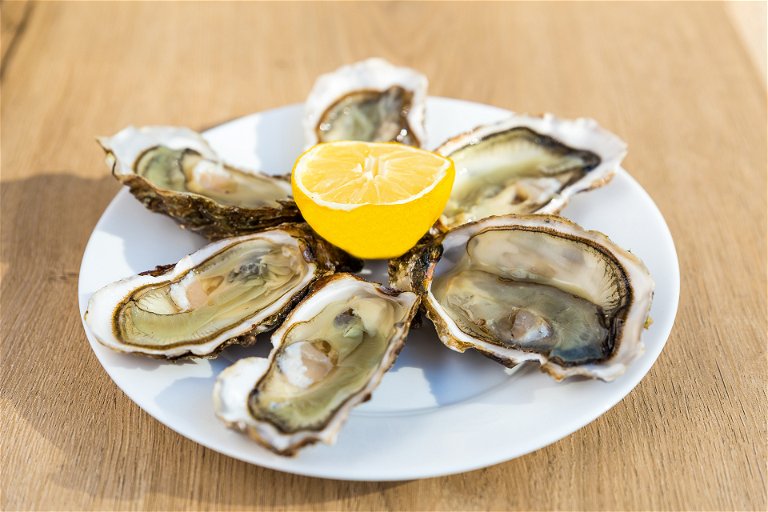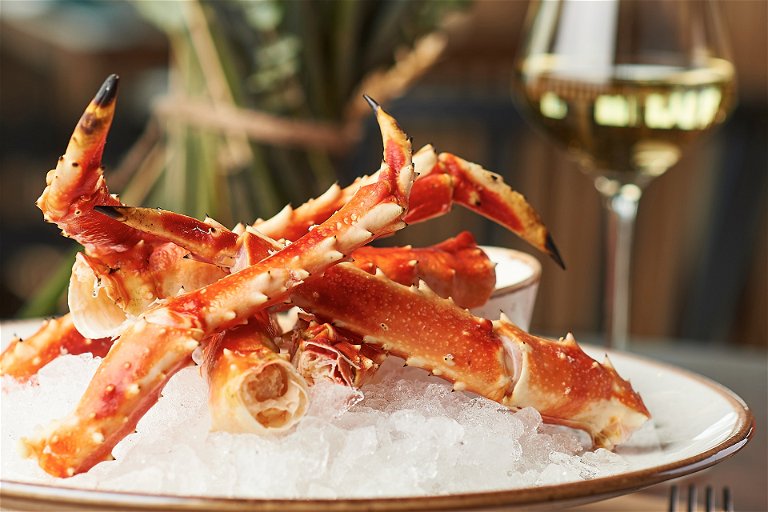Challenging the three Cs of Christmas, part 2: Chablis
Part 2 of our challenge takes in alternative dry whites for festive seafood, fish and light starters.
As soon as Christmas seafood is mentioned, our Pavlovian reaction is to call for Chablis. The seductive saline charms of this classic white are hard to resist: like drinking a glass of white blossom shot with Kimmeridgian chalk. But the world of crisp, mineral-rich whites to match with seafood stretches well beyond this little patch of Burgundian soil. From the wild Atlantic coasts to the Italian Riviera, Austria’s land-locked vineyards to Greek island wines, there’s great value and extraordinary drinking to be had if you cast your net a little wider.
Seafood and fish are traditional holiday favourites in many households: trays of oysters; platters of lobster and crab; whole fish centrepieces. And then there’s smoked fish, salmon and friends, without which no Christmas is complete. All this bounty calls for the citrus spritz of white, but each demands something different – our guide will help you find fish-friendly whites across the major categories of festive sea grazing. Many of these wines also go well with starters such as asparagus, remoulade, poultry terrines and salad leaves (as well as salty snacks like crisps or nuts – just don’t admit to that in polite company).
The environmental impact and sustainability of seafood is now an inescapable consideration. Look out for MSC (Marine Stewardship Council) or ASC (Aquaculture Stewardship Council) tick logos on labels. The MSC Good Fish Guide lists the edible fish species to choose from and those to avoid. The WWF also produces a range of useful consumer guides. The European Union is the world’s largest market for seafood products: it really makes a difference what we put on our plates this Christmas.
Follow the Loire to the coast for shellfish
The majestic Loire empties into the Atlantic just west of Nantes. To the north, Britany produces its Pacific and Belon oysters, and to the south lie the salt marshes of Marennes-Oléron, home to the famous “Claires”. Richer and plumper in the winter months, these oysters are perfect for Christmas as are clams, scallops and mussels: unsurprisingly, Loire wines make fabulous accompaniments. Starting inland, you’ll encounter famous neighbours Sancerre and Pouilly-Fumé. Made from green, refreshing Sauvignon Blanc, they typically avoid new oak flavours but add texture through barrel fermentation and lees ageing. Lacking the intense elderflower hit of their NZ cousins, they offer high-acid elegance and enough grip to match the creamy plumpness of robust shellfish.

Further downstream lie the Chenin Blanc heartlands. Vouvray, home to sparkling wines, also produces still whites across a range of sweetness levels. Seek out leaner, dry examples for refreshment; off-dry wines, well-chilled, can pair with bolder dishes, but save the demi-sec for the goat’s cheese. Further west, Anjou-Saumur, famous for its rosés, is home to Savennières AOC – a concentrated, high-acid white that lends an aristocratic air to festivities. Closest to the sea, the Nantais manage to coax the rather average Melon grape into wonderfully crisp, saline Muscadet perfect for seafood. Opt for a Muscadet Sèvre et Maine AOC with “sur lie” on the label for additional depth and texture; even better, choose a highly regarded Muscadet Cru Communaux.
Iodine freshness balances salt and smoke
The wild Galician coast is the next port of call for fish lovers, Rías Baixas DO specifically. It’s the Albariño grape that rules here: piercingly fresh, with echoes of yellow fruit and flowers. Hopping over the border into Portugal, it becomes Alvarinho, used in the blended wines of Vinho Verde DOC. Significant improvements in winemaking have helped this wine slough off its tired image to reveal a freshness, often with welcome spritz. Both Spanish and Portuguese wines have enough acidic drive and character to partner salted fish dishes like local Bacalao (and Italian cousin Baccalà), or Provençal festive favourite, Brandade (hake and pollock make excellent alternatives to cod in these dishes).
Smoked fish is more tricky: varying textures and smokiness make it hard to be sure that your chosen wine will work. An unlikely answer comes from the Spanish region of Jerez. Starting life as a simple white wine, Sherry is totally transformed by fortification and intricate ageing into something extraordinary. The briny, bruised apple profile of Finos and Manzanillas are bold and distinctive enough to partner smoked fish, as well as small fry such as sardines and anchovies. Lightly oxidised sherries can also work, echoing the smoky profile. Oloroso might overpower, but Palo Cortado or Amontillado balance both salinity and oxidative fullness. Serve chilled with a starter and your guests will be intrigued and delighted.
Christmas crustaceans call for citrus
The firm, slightly sweet meat of prawns, crab, crayfish and especially lobster calls for something richer and altogether fruitier: step forward ever versatile Chardonnay and Riesling. French Chardonnays can never be discounted, including Chablis, but head to warmer climes for softer fruits and maybe a hint of oak. The rich butteriness of some Chardonnays can even stand up to creamy and gratinated dishes like lobster thermidor or coquilles St Jacques. Both old and new world Rieslings on the other hand provide that essential squeeze of fragrant citrus along with fruit complexity.
The extreme north and south of Chile, regions such as the Limarí or Bio-Bio Valleys, offer just the right mix of stone-fruited warmth and high acid zing, with or without oak. The country’s hotter Central Valley leans towards tropical fruit and drops the acid. This can leave the rich flesh of crustaceans feeling flabby but is good with richer sauces. Look also to the cooler coasts of South Africa: Hemel-en-Aarde and Elgin Chardonnays are a perfect mix of sensuous fruit and freshness. The Californian coastal AVAs of Santa Barbara, Sonoma and Mendocino counties, as well as Oregon’s Willamette Valley, are real contenders for fish-friendly Chardonnays too. Chameleon-like Riesling, in which the predominant citrus flavour shifts from lemon to greener fruits, can work wonderfully. A dry Riesling from Alsace or Germany’s Mosel will edge towards grapefruit behind its richesse; Australia’s Eden and Clare Valleys offer pure lime that partners so well with lighter crayfish and crab. Quality producers like Cave de Turckheim, Dr Loosen, and Jim Barry are widely available.

New classics for sea and freshwater fish
Many beautiful whole fish can grace the Christmas table: salmon and trout, bream and bass, central European favourite carp, or the magisterial duo of turbot and sole. Freshwater fish tend to be sweeter and subtler, calling for lighter, more fragrant wines. Meaty sea fish and oily fish like sardines need something heartier. There are world-class Italian whites for both moods. The Ligurian Riviera and the island of Sardinia lay joint claim to the wonderful Vermentino (known as Rolle in France). Its most famous incarnation is the rich Sardinian Vermentino di Gallura DOCG, which can cope with oilier fish; lighter versions can also be found throughout the north-west of Italy and the Languedoc. From Italy’s east coast comes Verdicchio, at its best in Verdicchio dei Castelli di Jesi. Its natural high acidity and textured minerality mean it can partner well with a variety of fish as well as shellfish served, as locally, with garlic and olive oil.
Austria’s signature fresh Grüner Veltliner somehow manages to be versatile enough to partner most fish whilst remaining characterful. It goes especially well with subtler fish like trout and even ceviche or sushi. Another surprisingly versatile white hails from Greece. The Assyrtiko grape reaches its zenith on the impossibly beautiful island of Santorini. Here, producers like Gaia and Estate Argyros coax vines from the unyielding volcanic soil to create pure, mineral-rich wines of quality. The island also produces the Nykteri style, Assyrtiko often blended with a little floral Aidani and Athiri. These unusual wines have concentrated stone fruit and nut aromas more than capable of standing up to gamey turbot and richer sauces.

